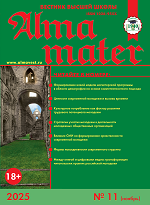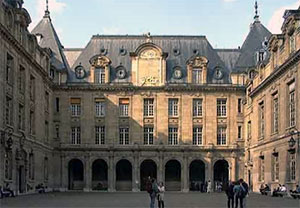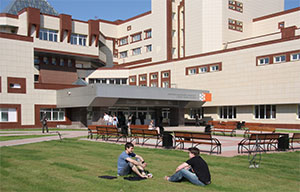Vasiliy S. Senashenko,
Doctor of physics and mathematics,
Professor, Peoples’ Friendship University of Russia,
Lomonosov Moscow State University,
E-mail: vsenashenko@mail.ru
Tatiana B. Mednikova,
graduate student, senior instructor,
Peoples’ Friendship University of Russia,
E-mail: tmednikova@list.ru
Presented is analysis of the process of using of competence approach in professional sphere by corporate structures for training and developing of personnel. Examined is the problem of “finishing” of graduates of high school for elimination of differences between level of competences, obtained in high school, and needed by employers. Also shown is objective character of differences in structure and content of competences of high school’s graduate and professional with practical labor experience.
Key words: system of higher education, FGOS VO, models of competences, competence approach, professional sphere, corporate structures.
References
1. Moskvina N.B. University professor’s professional activity: the issue of the mean-ing destruction. Vysshee obrazovanie v Rossii. № 12, 2014, p. 36- 41.
2. Stoof, A., The Boundary Approach of Competence: A Constructivist Aid for Un-derstanding and Using the Concept of Competence, Human Resource Development Review Vol. 1, No. 3 September 2002.
3. Gastev A.K. Narodnaya vypravka//Uprising of culture. Kharkov, 1923
4. MacClelland D.K. Testing for Competence rather than intelligence. 1973
5. Wu, Jui-Lan, The Study of Competency-Based Training and Strategies in the Public Sector: Experience From Taiwan, Public Personnel Management 2013, 42 (2)
6. McEvoy, Glenn M., A competency-based model for developing human resource professionals, journal of management education, Vol. 29 No. 3, June 2005
7. Spencer, L. M., & Spencer, S. M. (1993). Competence at work: Models for superior performance. New York: John Wiley
8. Short, Ronald R., Competency Education and Evaluation: Issues and Dilemmas, Group & Organization Studies, March 1977.
9. Website Career One stop http://www.careeronestop.org/competencymodel/competency-models/advanced-...
10. Martynov V.G., Koshelev V.N., Sheinbaum V.S.. The theory of semifinished prod-ucts as applied in higher education. Engineering education. 2012, 11. p. 96-101.
11. Guidelines for the development of core professional education programs and further professional programs in consideration of respective professional standards. Russian Ministry of education and science, № ДЛ-1/05vn. dated 22.01.2015
12. Bryzgalina E.V. Competency-based approach in the education system. http://postnauka.ru/video/40278.
13. Education to Employment: Getting Europe’s Youth into Work. McKinsey Center for Government, 2014.
14. Chomskiy A. "Logical Structures in Language." American Documentation 8, no. 44 (October 1957): 284-91
15. Senashenko V.S. On the competency-based approach in higher education. Vysshee obrazovanie v Rossii. 2009, №4, p. 18-24
16. Senashenko V.S., Kuznetsova V.A., Kuznetsov V.S. On competences, qualifica-tions and competency. Vysshee obrazovanie v Rossii. 2010, № 6, p.18-23.
17. Senashenko V.S., Mednikova T.B. Competency-based approach in the higher edu-cation: myth or reality. Vysshee obrazovanie v Rossii. 2014, № 5, p. 34-46.
18. Putilina N.V., Senashenko V.S. Personality socialization as the source of personal competencies. Alma mater. 2014, № 9, p. 49-52
19. Senashenko V.S. On the transition of the higher education to the new education standards. Alma mater 2013, № 8, p. 6-14.
20.Senashenko V.S., Mednikova T.B. On the use of competency-based approach in business structures and in the development of higher education programs. Engineering pedagogy. Moscow 2015 (in press)
20. Heather Getha-Taylor, Raymond Hummert, John Nalbandian, and Chris Silvia. Competency Model Design and Assessment: Findings and Future Directions. Jour-nal of Public Affairs Education. 2013, Volume 19 No.1











.png)






